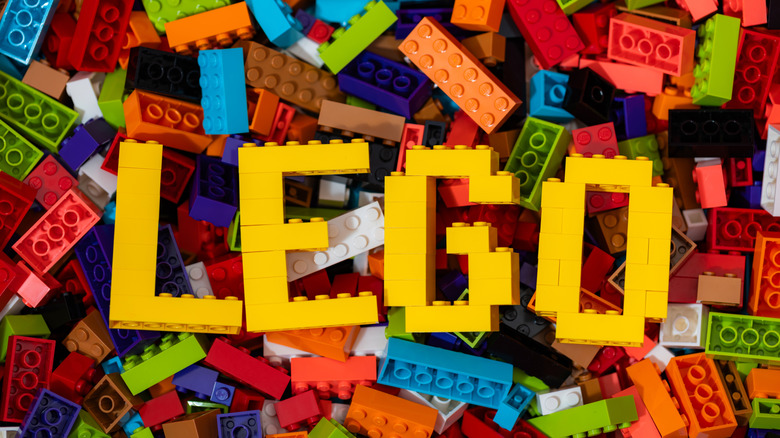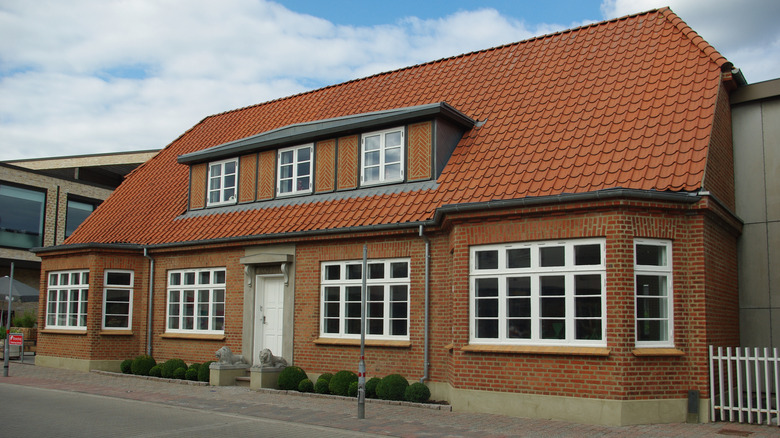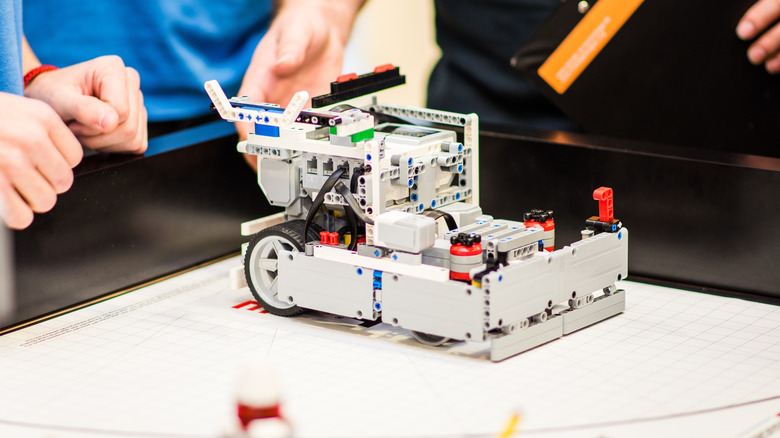What Does Lego Stand For?
Lego is by far the most valuable toy brand in the world, delighting young and old alike for generations. The brand's name is internationally renowned, but what does it mean? Given that the Lego Group spells its name in all caps, you might assume it is an acronym, but it is actually a portmanteau. Lego originated in Denmark, and its name comes from combining the Danish words "leg godt" (pronounced "lye got"), which together mean "play well." It's the perfect name for a toy company, but believe it or not, Lego was almost known by a different name.
When Lego founder Ole Kirk Kristiansen set out to find a name for his fledgling toy company, he almost went with "Legio," from the Latin root of "legion". The idea behind this name was that the company produced a legion of toys. In the end, Kristiansen settled upon the name without the "I".
There is another story that links the Lego name to Latin. The company itself has claimed that years after the name was chosen, someone pointed out that "lego" in Latin means "I assemble" or "I put together." However, Lego is actually wrong in this assertion. The real meaning of "lego" in Latin is "I read," "I choose," or "I collect." Come to think of it, that last definition could still apply to Lego, given the collectible nature of the sets.
Lego was born from hardship
The origin of Lego was anything but fun and games. Ole Kirk Kristiansen was originally a carpenter and ran a company that produced goods for the local farmers in his small town of Billund. However, the Great Depression dealt a crushing blow to Danish farmers, costing Kristiansen his customers and forcing him to lay off his entire staff in 1931. The next year, his wife, Kristine Sørensen, died, leaving him to raise their four sons as a single father.
Those brutal years did bring one stroke of good fortune that would change Kristiansen's life. As a craftsman, he belonged to Landsforeningen Dansk Arbejde (the National Association for Danish Enterprise), which distributed a magazine to its members. In one edition, Kristiansen read a column about the profitability of toy manufacturing, and it inspired him to change course. He had a workshop full of wood left from his carpentry business, so he began making wooden toys like model cars and yo-yos.
Establishing success in a new industry was difficult. Kristiansen had to go door-to-door to sell his toys, but eventually, the quality of his craftsmanship carried him to success. For over a decade, Lego looked nothing like the toys we know today, but in 1949, the company launched its first plastic brick building kits. The following year, Kristiansen's son Godtfred joined the business. He developed the Lego System in Play, a commitment to make sure that all Lego products have compatible parts, so that children can mix and match, nurturing their imaginations. There are now over a trillion Lego bricks in the world, and that's something Ole Kirk Kristiansen could have never seen coming.
The surprising role of Lego in science
Lego has found many uses in the world of science. The plastic pieces provide construction materials that are cheaper and more readily accessible than most lab equipment. They are particularly useful for students to take on projects like building a model of DNA with Lego. The company started an educational department in 1980, now known as Lego Education, which introduced toys that demonstrated the fundamentals of engineering, like how gears operate. Lego later partnered with MIT to produce Mindstorms, a product line that utilizes motors and computer coding to teach kids about robotics through toys.
The connection between engineering and Lego has continued, leading to some surprising scientific breakthroughs. In 2024, a team of mechanobiologists at the Université Côte d'Azur in Nice, France, demonstrated this by building a cell stretcher from Lego. Cell stretchers are motor-powered devices that stretch artificial cell membranes, allowing scientists to study how those cells respond to strain.
Lego has even inspired the European Space Agency (ESA). Scientists have long been working on the problem of how to build a human outpost on the moon. Flying tons of construction material from Earth would be exorbitantly expensive and time consuming, but what if we could build using materials from the moon itself? An ESA team took inspiration from Lego to build interlocking bricks out of meteorite dust. Fittingly, when the bricks were unveiled to the public in 2024, they were put on display at Lego House in Billund, where the company is still run by the Kristiansen family.


